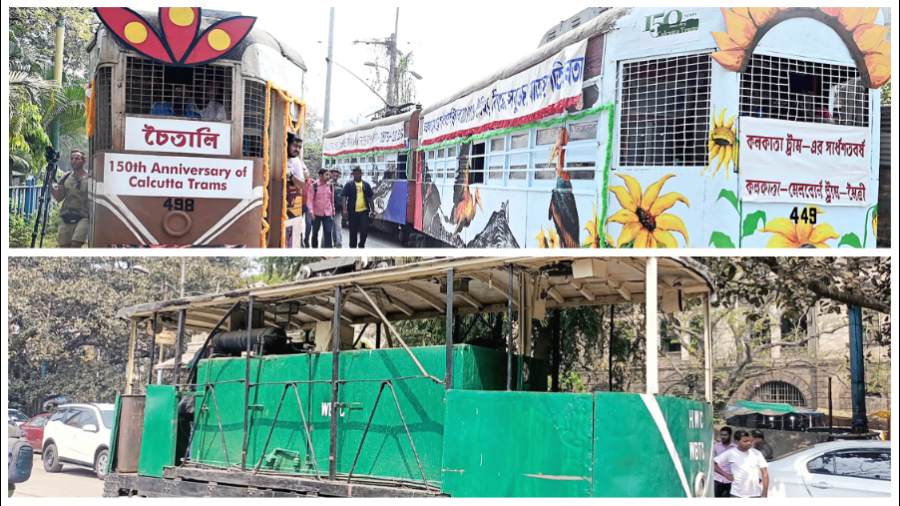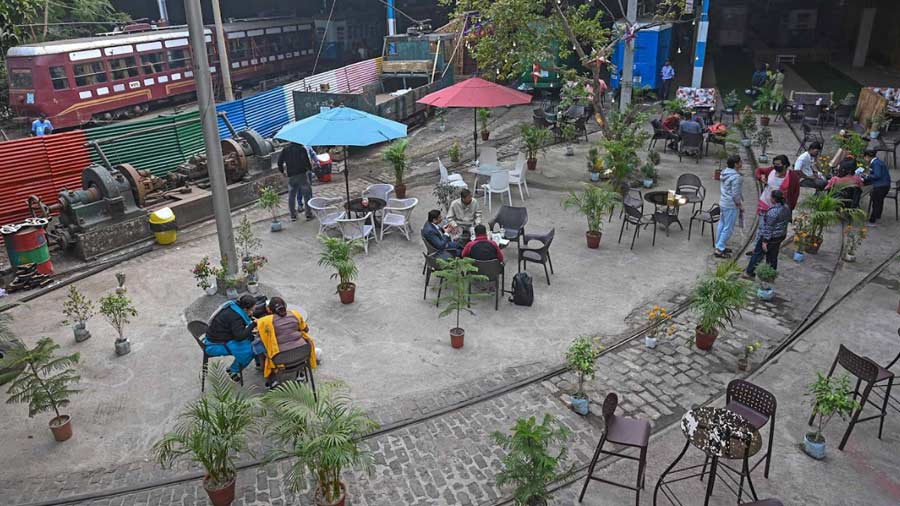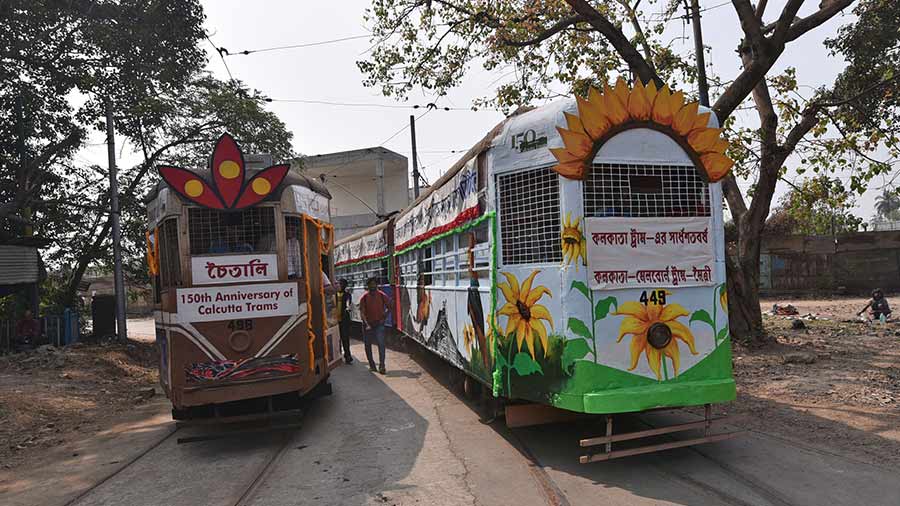Trams in the city will remain a barely used relic of the past.
The grim reminder came on a day Kolkata was celebrating 150 years of the trundling streetcars.
Snehasis Chakraborty, West Bengal’s transport minister, put it bluntly: trams will run on “four or five routes” and “it would not be possible” to run them on all routes like before.
Chakraborty said the government acknowledged that trams were an environment-friendly mode of transport but the city’s roads were too narrow to let trams run on all routes.
He said trams would remain a heritage of the city.
The government will not completely stop trams, Chakraborty said.
Tuesday was the 150th birth anniversary of Kolkata’s trams. The minister was invited to the celebrations marking the occasion by the Calcutta Tram Users Association (CTUA), a group formed by people advocating for more tram services.
The first tram — a horse-drawn carriage — in Kolkata then Calcutta, ran between Sealdah and Armenian Ghat on February 24, 1873, according to the website of the West Bengal Transport Corporation.
“We are constantly in talks with Kolkata police and the Kolkata Municipal Corporation. Based on their inputs we will run trams on routes where it will not lead to congestion,” said Chakraborty.
There are only three routes on which trams now run, said a member of the tram users’ association — Tollygunge-Ballygunge (route 24/29), Gariahat-Esplanade (route 25) and Shyambazar-Esplanade (route 5).
“Our government does not want to shut down trams but, at the same time, it is not possible to run trams on all routes. Trams will run on four or five routes,” Chakraborty said.
“Kolkata has very little road space. It is not possible to run trams on all routes. Roads are narrow in many places,” he said.
Many who attended the programme at the Esplanade terminus did not agree with Chakraborty.
Members of the tram users’ association said 25 tram routes were operational in Kolkata till June 2017. In 1958, the number was 51.
In recent years, the Covid pandemic, destruction caused by Amphan Cyclone in 2020 and Metro Railway construction were cited to stop one route after another.
Attendees included residents from cities across the world where trams are still in use as an important public transport system.
Residents from Melbourne and Berlin said that trams were running across large parts of their cities and they were not just being used to promote heritage or tourism.
Roberto D’Andrea, who worked as a tram driver and conductor in Melbourne, said trams still ran on 40 routes in the Australian city. There are millions of users of trams.
“It is not merely there to be a heritage ride but used daily by commuters as part of the public transit system. There is a single ticket that can be used on trains, buses and trams,” D’Andrea said.
Manfred Auster, the German consul general in Kolkata, said trams were part of the integrated transport system in Berlin and many other places in his country.
“There are multiple cities in Germany where trams are still running. Trams are especially used by people in areas that are not served by the Metro or the S-bahn (trains),” said Auster.
Theatre actor Manoj Mitra and singer-songwriter Anjan Dutt were at the flagging off of the celebrations on Friday.
Three trams that are no longer used to ferry passengers were taken out of Kolkata’s depots for a special run on Friday.
Among these was a tram made in 1917. It was used to wash the tracks.
Of the other two trams, one was made in the 1930s and the other in the 1940s.



